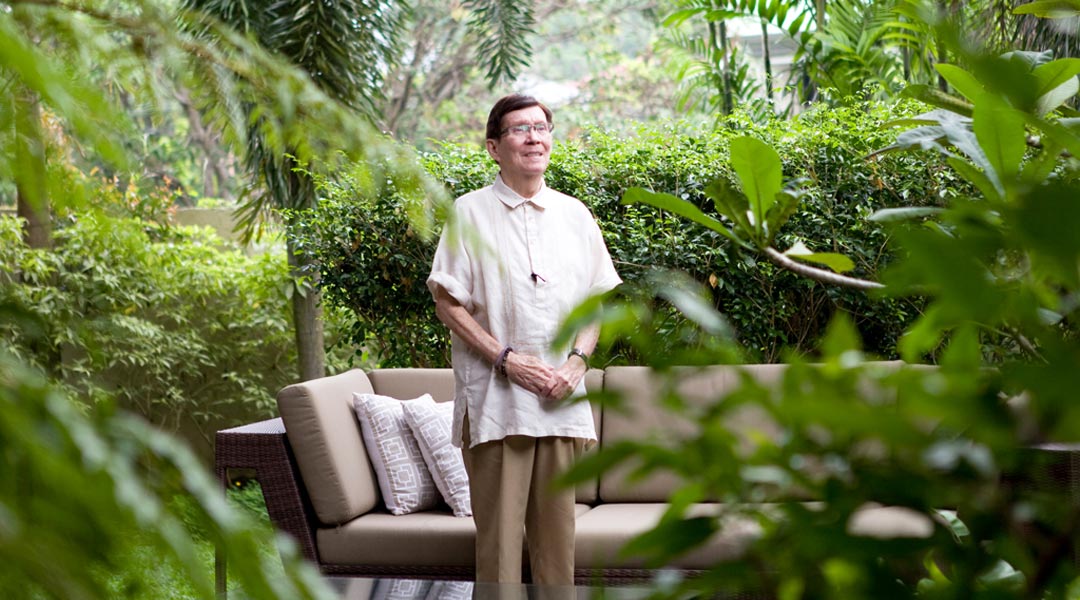
Bobby Mañosa: On loss, and those with lasting significance
Pursuant to one psychoanalytic account, losing people or things (or both) symbolizes success. It is, apparently, the subliminal desire’s way of purposely interrupting the rational mind. Apart from that, in “The Psychopathology of Everyday Life,” Freud elucidates on “the unconscious dexterity with which an object is mislaid on account of hidden but powerful motives,” as well as “the estimation in which the lost object is held, or a secret antipathy towards it or towards the person that it came from.” Abraham Arden Brill, one of Freud’s colleagues, puts the seemingly two blurs in a more clearer statement: “We never lose what we highly value.”
On the evening of Wednesday, February 20, 2019, National Artist for Architecture Francisco “Bobby” Mañosa has passed away, a week after his 88th birthday. News was confirmed by his daughter Bambi Mañosa through an Instagram post that rendered everyone speechless.
Born in Manila on February 12, 1931, “Bobby” spent his childhood in Calle Azcarraga, which is now C.M. Recto Ave., where his family first lived in before resettling in the outskirts of San Juan. He enrolled at the UST College of Architecture after finishing high school at San Beda College. In 1953, he earned his B.S. Architecture degree. And in 1954, he formed the architectural firm Mañosa Brothers alongside his two brothers, Jose and Manuel, both of whom graduated from the same school. The Hidden Valley Springs Resort, the Makiling Conference Center, the restoration of the Guadalupe Ruins, Colegio San Agustin in Makati, and the San Miguel Corporation Corporate Headquarters in Ortigas Center, Pasig City, were several of the group’s notable works.
There are many explanations why we lose people and things, but when we do lose, the usual reaction is to want to know where it is, and such is followed by a question about causality, like the resonant why? What means or strength urged it into disappearance?
Mañosa is recognized for having devoted his life’s work to creating a Filipino identity in architecture. Vastly inspired by traditional vernacular forms, namely, the bahay kubo and the bahay na bato, he concerted the conventional with modern building technology to produce structures he believed were ideal for the Philippines’ tropical climate. In 1976, Mañosa established his own firm, Francisco Mañosa & Partners. This outset enabled him more freedom to bring into light his view of things with regards to Philippine Architecture. For this reason, he was frequently asked what makes architecture Filipino. He once retorted: “Filipino values, Philippine climate, and the use of indigenous materials.”

What sincerely grounded his works were love for family, the extended family, its place and space in the expansive social network, and the Filipino’s baroque sensibility and appetite for ornamentation. Mañosa believed Philippine climate seeks tropical architecture whose characteristics embrace modifications to the wet and dry seasons. This means incorporating high ceilings that emulate easy breathing, large windows for honest landscapes, low eaves, and overhangs that allow shade and protection from sun and rain. The man simply believed in the unfettered.
Regardless of what is gone, it is the loss attached to this anguish that carefully puts us in our place; it introduces to us lack of order and absence of control, and the fleeting nature of existence. In theory, the loss of objects entails the possibility of recovery, restoration to be specific. Almost all missing possessions can be returned to the owner, which is why the pinnacle emotion of losing things does not rest at fear or irritation or regret, but, paradoxically, hope. On the other hand, with people, it is the complete opposite, as this loss is not a passing moment, but a final one. Nevertheless, we do not end here.
A faithful Catholic, Mañosa was religious man who is also acknowledged for his ecclesiastical works, such as the St. Joseph Parish Church (also known as the Las Piñas Bamboo Organ Church), the Mary Immaculate Parish, and the EDSA Shrine in Ortigas Center. His other works include the Ateneo Professional Schools in Rockwell Center, the LRT Train Stations, Elsie Gaches Village, and the restoration and renewal of Corregidor Island into the masterplan for the development of the Quezon Memorial Circle.
As natural as inhaling air, we go searching for Bobby Mañosa, all he is and the traces that define him all the more now. And as more natural as exhaling the same air, we resume with the loss. His absence is total; it may feel like we are left with nothing. We are not, however, and because of this, we continue, again, with our search. Loss is a kind of external conscience, urging us to make better use of our finite days. This account on grief may be seen as a reflection; it invites us to look inwards, to grow, to retain native values, and of course, to speak the language he was most familiar with, which is none other than that of the true Filipino. ![]()
Francisco “Bobby” Mañosa will be laid to rest in a state funeral at the Libingan ng mga Bayani in Taguig this incoming Sunday, February 24. The wake already took place at the Heritage Memorial Park Chapels 2, 3, and 4, yesterday, February 21. It will continue today, February 22, to February 23 from 10AM lasting until 10PM.
READ MORE: Dr. Tan Loke Mun devotes his attention to every nook and cranny in the S11 House


